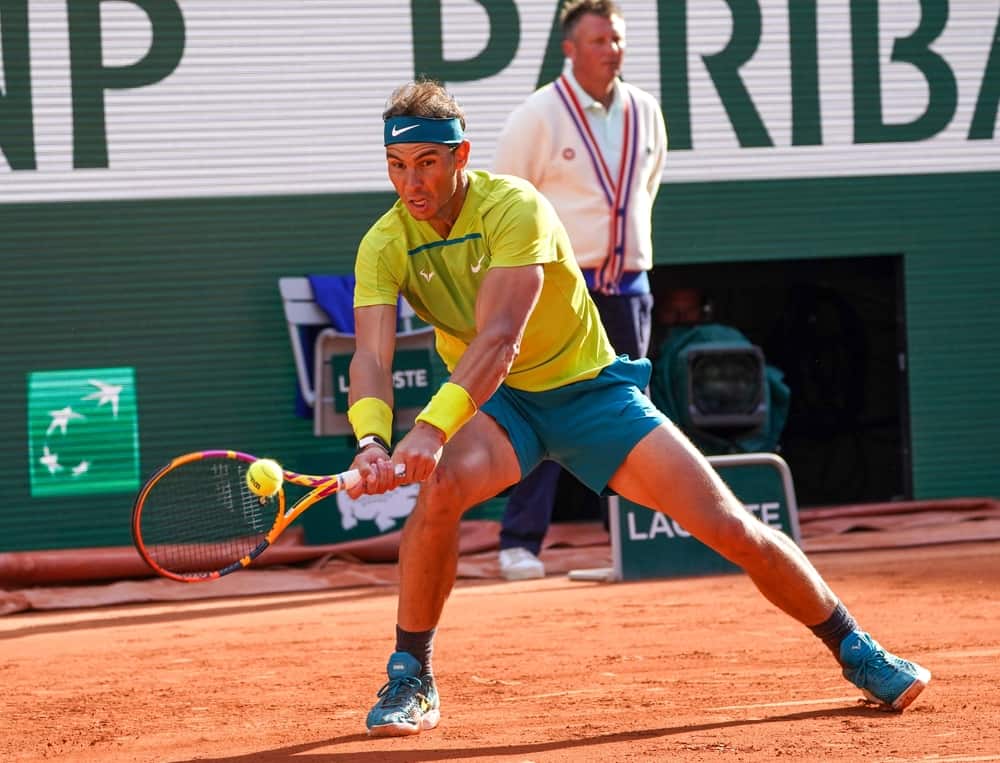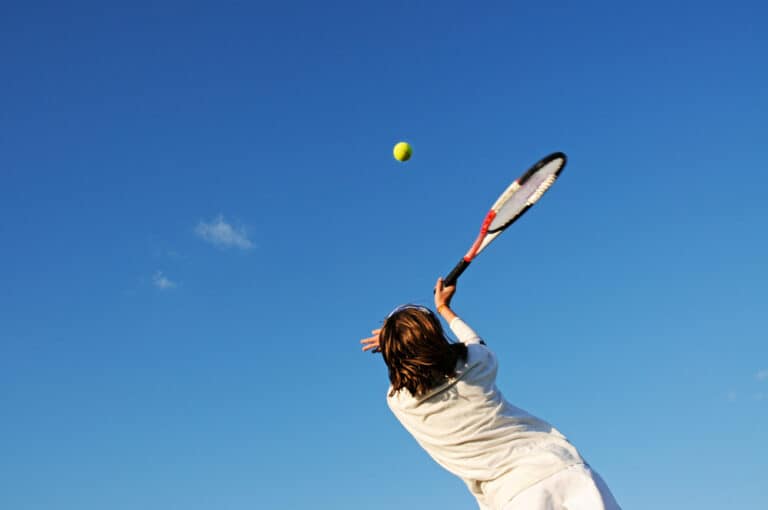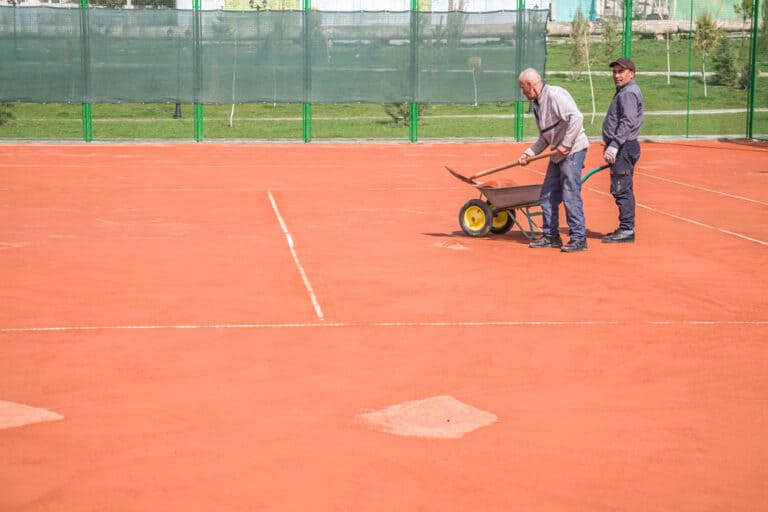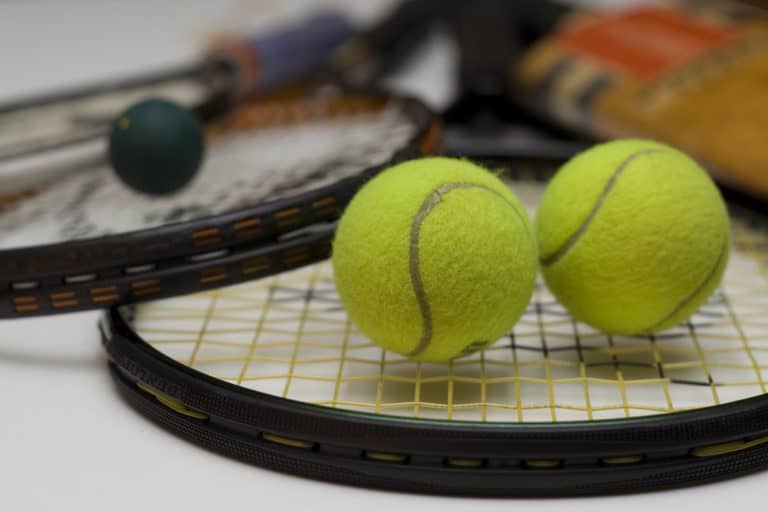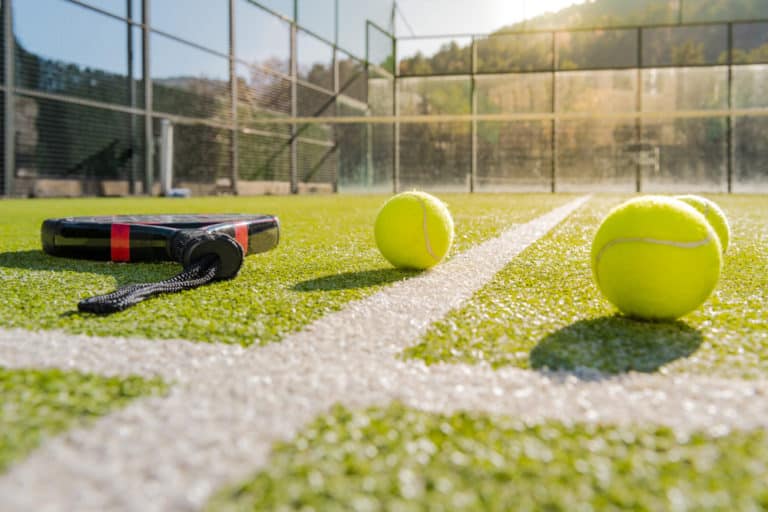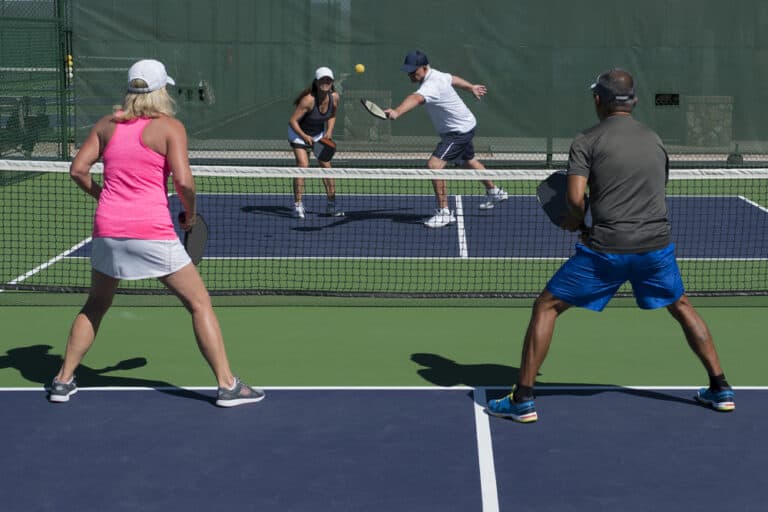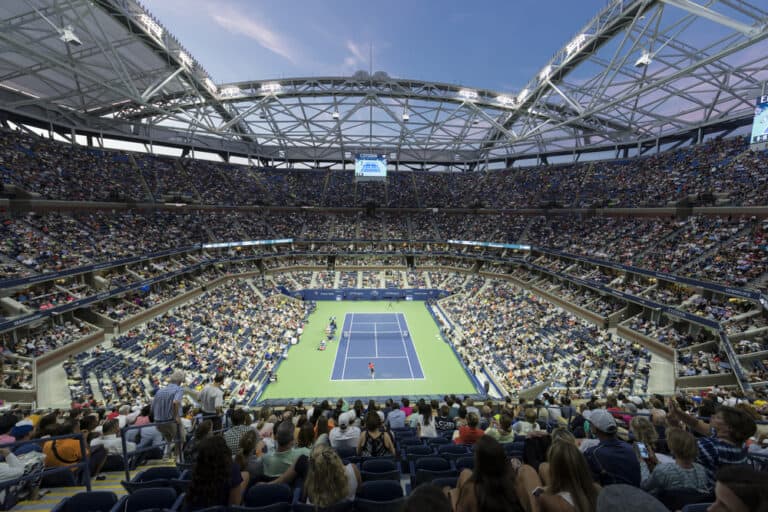What Is The Slowest Court In Tennis?
People often remark that tennis courts have gotten slower over the years. You may have also argued over which surface is the slowest. Is clay grabbing the ball the most, or did the grass get too wet? Instead of hitting someone with your racket, keep a firm footing by referring to the groundwork specifics and official measurements done by the world tennis governing body, the ITF.
According to the ITF’s Court Pace Ratings (CPR), clay courts are the slowest surface, with a typical CPR value of 1. Grass courts are rated at a CPR of 5 and hardcourts at between 2 to 4. The slower clay courts offer increased bounce in the ball, extended rallies, and more technical play styles.
The speed of a playing surface depends on the materials they are made of, which will deliver characteristics that influence the passage of play. Along with a particular playing style, the type of court also dictates that players should consider how much speed and bounce they can get from the ball. Players must choose what would be the most appropriate sportswear to increase their odds of winning.
The Different Types Of Tennis Courts And Playing Speed
The International Tennis Federation (ITF), the world governing body for tennis, uses a speed rating scale for different courts termed the Court Pace Rating (CPR). Because of standard surface compositions, most courts that fall within a particular type that players will grace will have common characteristics and playing speeds.
The CPR scale ranges from 1 to 5, with 1 being the slowest and 5 being the fastest. Slower courts tend to have more bounce on the ball, while faster courts don’t achieve as much lift. A tennis court with a CPR rating of 3 is considered medium speed and will have a balance of play between speed and bounce.
The four majors are the most prestigious and iconic annual tennis tournaments. The slowest surfaces are at Roland Garros, which is the French Open. The clay courts at the French Open rank at a CPR of 1, the hardcourts at the Australian Open and US Open range between CPR 2 and 4, and the grass courts at Wimbledon may reach up to CPR 5, depending on weather conditions.
While the three most known court types in tennis are grass, clay, and hardcourt, other surfaces also exist. Usually, other playing surfaces fall between the better-known types in terms of their performance. The ITF classifies tennis courts on a surface code depending on their makeup, ranging from artificial grass and clay to concrete, asphalt, and even carpet.
The different tennis court surface classifications according to the ITF and their typical levels of observed speed and bounce:
| Surface Code | Surface Type | Typical Speed | Level of Bounce |
|---|---|---|---|
| A | Acrylic/Polyurethane (Hardcourt) | 2 to 4 | Moderate to Medium-High |
| B | Artificial Clay | 1 | High |
| C | Artificial Grass | 4 | Medium-High |
| D | Asphalt (Hardcourt) | 2 to 4 | Moderate to Medium-High |
| E | Carpet | 4 to 5 | Lower |
| F | Clay | 1 | High |
| G | Concrete (Hardcourt) | 2 to 4 | Moderate to Medium-High |
| H | Grass | 5 | Low |
Choosing Your Tennis Gear To Match The Surface
The surface on which you play tennis will significantly affect your choice of attire. The different characteristics of each court will influence your flexibility, pace, stability, and shot power. Your choice of shoes, racket, and ball may all affect your performance on a particular type of court.
Choosing Appropriate Tennis Shoes For Slower Surfaces
Play on slower courts relies less on speed and power, shots bounce higher, and more maneuverability and grip will be helpful when chasing after balls. As players can move from side to side rather than being limited to only forward movement, lateral stability is valuable on clay courts. The added traction allows players to plant their feet and put as much power in a shot as possible.
The best clay court tennis shoes are tight and highly durable. They have increased grip levels, provide good support for sideways movement, and were designed to not induce any damage to the court. Clay court shoes don’t have rugged outsoles, as they will scrape the surface, but they are not entirely flat, or players may get stuck or slip, nor are they too bouncy or soft.
Choosing The Right Tennis Racket To Hit Slower Balls
A player’s choice of tennis racket will depend on their skill level, preferred playing style, and swing. The racket’s frame and strings will determine whether they suit a particular player.
Players must decide whether they want more power or control in their swing. Larger rackets offer more powerful shots at the expense of precision. In comparison, smaller rackets provide more control but can’t hit the ball as hard. As for strings, higher tension will help to produce more accurate shots, while less tension improves shot power.
As clay courts reduce the pace of any shots players make, many players may opt for more substantial rackets with less string tension. The power increase will help somewhat alleviate the surface friction and improve your chances of hitting the ball beyond your opponent’s reach.
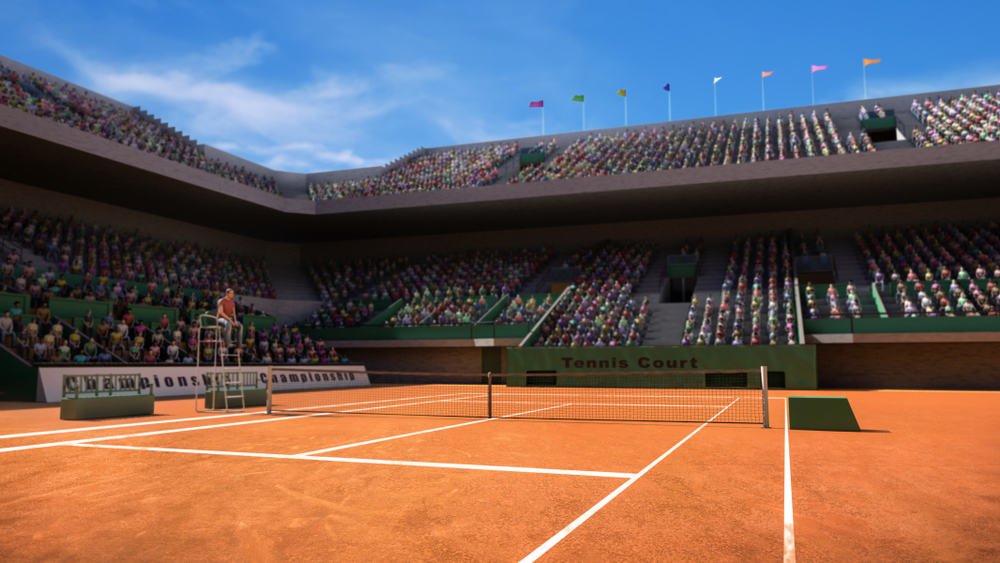
Choosing An Suitable Tennis Ball For The Slower Surface
While all tennis balls look similar, they are all intended for use on a particular surface. Regular-duty (RD) balls are meant to be used on clay courts (but work on grass as well), as they have softer felts which will not intrude with the bounce the ball achieves. They tend to be faster but not to last for as long as extra duty (XD) balls which are more rigidly designed and intended for use on hardcourts.
Additionally, tennis balls are also typified according to their speed. Type 1 balls are the fastest, type 2 are medium-speed balls, and type 3 are the slowest. Faster balls are usually combined with slower courts, and faster courts are played with slower balls. These effects are used to counteract the peculiarities of each surface somewhat.
Type 1 Regular-duty tennis balls are the most popular choice on a slower tennis court, and their high pace and soft felt allow for a more natural bounce. When you buy a set of tennis balls, you can identify the balls meant for clay courts by red brand printing, while for hardcourt balls, this is done in black.
Which Playstyles Work Well On Slow Tennis Surfaces?
Good tennis players on slower (typically clay) courts have a lot of physical stamina. They can put tremendous amounts of spin on the ball, hit it high over the net, and put extra power into their shots.
The rallies on clay courts are longer than on other surfaces, especially grass. Players who produce the most spin on the ball and those keen on playing on the baseline perform better on clay courts. Good players will concentrate on clearing the net and keeping the ball within bounds, capitalize on positioning, and force mistakes from their tiring opponents.
Conclusion
The slowest courts in tennis are clay courts, rated at a CPR of 1 by the ITF. Slower courts have higher friction with the ball, which reduces speed but increases the height of the ball when it bounces. As the speed of the ball is diminished on clay, players are less likely to serve aces or hit balls with so much power that their opponents can’t reach them. Rallies last longer, and players will need to be very fit.
References
- https://www.asics.com/gb/en-gb/tennis-advice/guide-to-tennis-shoes/
- https://www.itftennis.com/en/about-us/tennis-tech/classified-surfaces/
- https://www.masterclass.com/articles/types-of-tennis-courts
- https://en.wikipedia.org/wiki/Clay_court
- https://www.wilson.com/en-us/blog/tennis/how-tos/how-choose-tennis-ball

